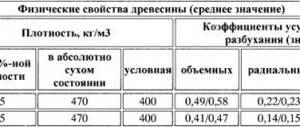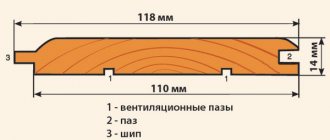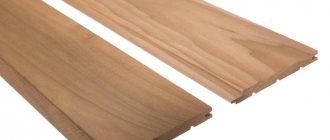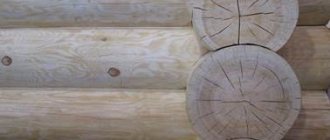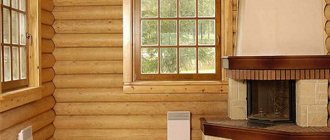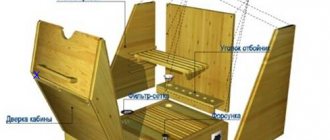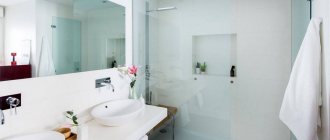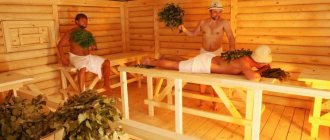Wood Species for Bathroom Finishing with Lining
The raw material for the production of lining is literally any type of wood. In Russia, the main materials used to make lining are: pine, spruce, larch, alder and linden. Of these, only alder and linden are suitable for finishing a bathhouse with clapboards.
Of the tree species growing in Russia, the most popular Bath species are: aspen, linden, and alder. Over the past 8-12 years, decorative wood species such as Canadian red cedar, Canadian hemlock and abash have appeared on the Russian market. Canadian cedar and hemlock grow and are imported naturally from Canada, and abash from Africa.
There is also an imitation of African abash on the market, which has taken the name Asian abash, but in fact, the real name of this type of tree is Paulownia (lat. Paulownia). This is a fast-growing tree that is grown on plantations on an industrial scale.
Well, a completely new valuable breed for the bathhouse is the exotic Meranti (also called Bukit). Meranti grows mainly in Malaysia and Indonesia. Meranti is a resinless rock with a light pink tint, natural shine, medium density and geometric stability.
The type of wood for finishing a bathhouse with clapboards, quite a lot. It remains to determine what you like best and suits your taste and budget. To help with this important decision, take a look at our Wood Comparison for Pairs page. Here you will find more detailed information about each breed and type of sauna lining.
Larch
Siberian larch is one of the most valuable wood species. Externally, larch is similar to all conifers. The wood has a brownish tint. In terms of density and strength, it is one third superior to pine and is a serious competitor to oak and ash. The fact is that larch wood is impregnated with resin, which is a natural antiseptic. Thus, this type of wood does not require additional processing, because nature itself took care of this. Therefore, bathhouses and houses built from larch last a long time. Larch tolerates moisture well and does not rot, which makes it radically different from pine.
Benefits of larch wood
- Strength
- Does not require additional antiseptic treatment
- Rot resistance
A larch bathhouse will be durable, but cold. She gives off heat quickly
Disadvantages of larch wood
- High thermal conductivity. The lower the thermal conductivity coefficient, the better the material retains heat and releases it more slowly. Larch has a thermal conductivity of 130 mW/(m*K) versus 95 mW(m*K) of cedar. Houses and baths made of larch are 45% cooler than those made of cedar.
- Relatively high price. Therefore, in order to reduce the cost of the final product, larch is often combined with pine during construction, using only in the initial stages. Larch is used to make logs, floors and the first three crowns of walls, which are susceptible to rotting (which pine often suffers from). However, it should be understood that a combined larch and pine bath will not be warm. The reason for this is the high thermal conductivity of both pine and larch.
Why Lining for Baths
Lining is the final product of woodworking, intended not only for finishing baths and saunas, but also for walls, facades, interior decoration, country houses, cottages, loggias, balconies and much more, as your imagination allows. They say...the board got its name “lining” back in tsarist times, when “tongue-and-groove” boards were used for lining freight cars.
Today, the word “lining” does not cause misunderstanding for anyone. Everyone immediately understands what we are talking about, i.e. This is a wooden plank planed in a certain way, having a tenon on one side and a groove on the other. This is done to fasten the planks together, which provides a reliable, solid connection with quick and easy installation. Therefore, with the existing abundance of finishing materials, for example; engineered boards, various panels - “Lined”, due to its practicality and ease of installation, remains unrivaled.
Why extra Canadian cedar lining is in great demand
Nowadays, Canadian cedar lining is in great demand in the city of Moscow, as it is an environmentally friendly material that is convenient and easy to install, is not afraid of moisture and is not susceptible to rotting. In addition, cedar siding boards have many other positive characteristics, such as:
- high strength (withstand heavy loads);
- durability;
- presentable appearance;
- low thermal conductivity (provide warmth in winter and coolness in summer);
- excellent sound insulation;
- resistance to microorganisms.
Lining Profiles for Baths
It is not difficult to produce lining of any size and profile using modern equipment. The profile will depend on the pattern of the cutter installed on the machine. In fact, you can put a cutter of any profile on the machine and get a new profile. However, certain profiles have established themselves on the market, which imitate, for example, a log or timber. That’s what they are called – imitation timber, blockhouse, etc.
The lining differs in thickness and width. Thin lining is mainly used for interior decoration, wide lining for facades. Since the lining has a “tenon” and a “groove”, to correctly calculate the amount of material, it must be taken into account that it has a “total” width and a “working” width.
Our company has a wide range of linings for baths made of decorative wood: hemlock, Canadian cedar, meranti, abasha, alder, linden and aspen. Wide and narrow profiles of lining for baths are different:
- Imitation of timber
- Block house
- Collective farmer
- Eurolining “classic” - has a standard sharp profile familiar to everyone
- Eurolining "softline" - like classic, but has a rounded profile
- Softline style - rounded profile
- Calm micro-groove (chamfered by 1mm)
- Calm mini-groove (chamfer removed by 2-3mm)
- Parquet lining – Wall/ceiling parquet with micro-groove
At the moment, only in ours you can buy lining for baths made of Canadian red cedar, which has a micro tenon/groove on all 4 sides of the die. The material is assembled like parquet and with virtually no waste!
Varieties of cedars used in construction
Since we insist on the difference between different types of "cedars", let's take a closer look at them.
Siberian
Siberian cedar. (Photo: LesAllianceTorgBO)
The main regions of production of Siberian pine pine are Altai and Siberia. It grows there for centuries, growing a thin layer of annual ring each year. This indicates the severity of the conditions. But this is precisely why wood is so durable and resistant to stressful temperatures.
The oldest specimens, about 800 years old, can reach a girth of about 2 meters (the root part, of course), and about 40 meters in height. In reality, a cedar forest with 400-year-old trees is considered old, and more often those that are 200-250 years old are cut down.
The sapwood of Siberian cedar is not separated by a clear boundary from the core. It is usually light yellow and the kernel is yellow-pink. The resin passages are more noticeable than those of ordinary pine; they are larger, but they are fewer in number.
The wood is easily processed in all directions, its softness is average between spruce and fir, but at the same time it is much more resistant to rot than them.
ON A NOTE! Cedar pine holds fasteners worse than ordinary ones, the difference is estimated at about 20%. That is, it holds nails and screws 20% worse.
Another good news is that insects do not like the resin of cedar pine, so they do not live in such wood.
In general, a bathhouse made of Siberian cedar should be installed - it has been tested by more than one generation of Siberians.
Canadian
What about Canadian red cedar? Well, let's find out the characteristics of thuja folded or giant.
And we will start... with thujaplitsin. It was very difficult to find him. Usually, when people start praising Canadian cedar, they say that it is antibacterial because it contains the mysterious “tuyaplicin”. Well... we did a little research, and it turns out that this is absolutely true.
Tuyaplicin belongs to of antibiotics , but an “antibiotic” is primarily an antibacterial agent extracted from fungi, right? However, this is not the case here: thujaplicin is produced by some conifers, and it is active against both bacteria and fungi . Moreover, it is the fungi that cause rotting that are most sensitive to it. We found this information in the course of lectures on chemical ecology.
We are glad that at least someone is not lying. So, Canadian cedar will not rot, and at the same time it will also improve the health of the air with its smell. True, in medicine thujaplicin has found use only in the treatment of acne, but this is also good
